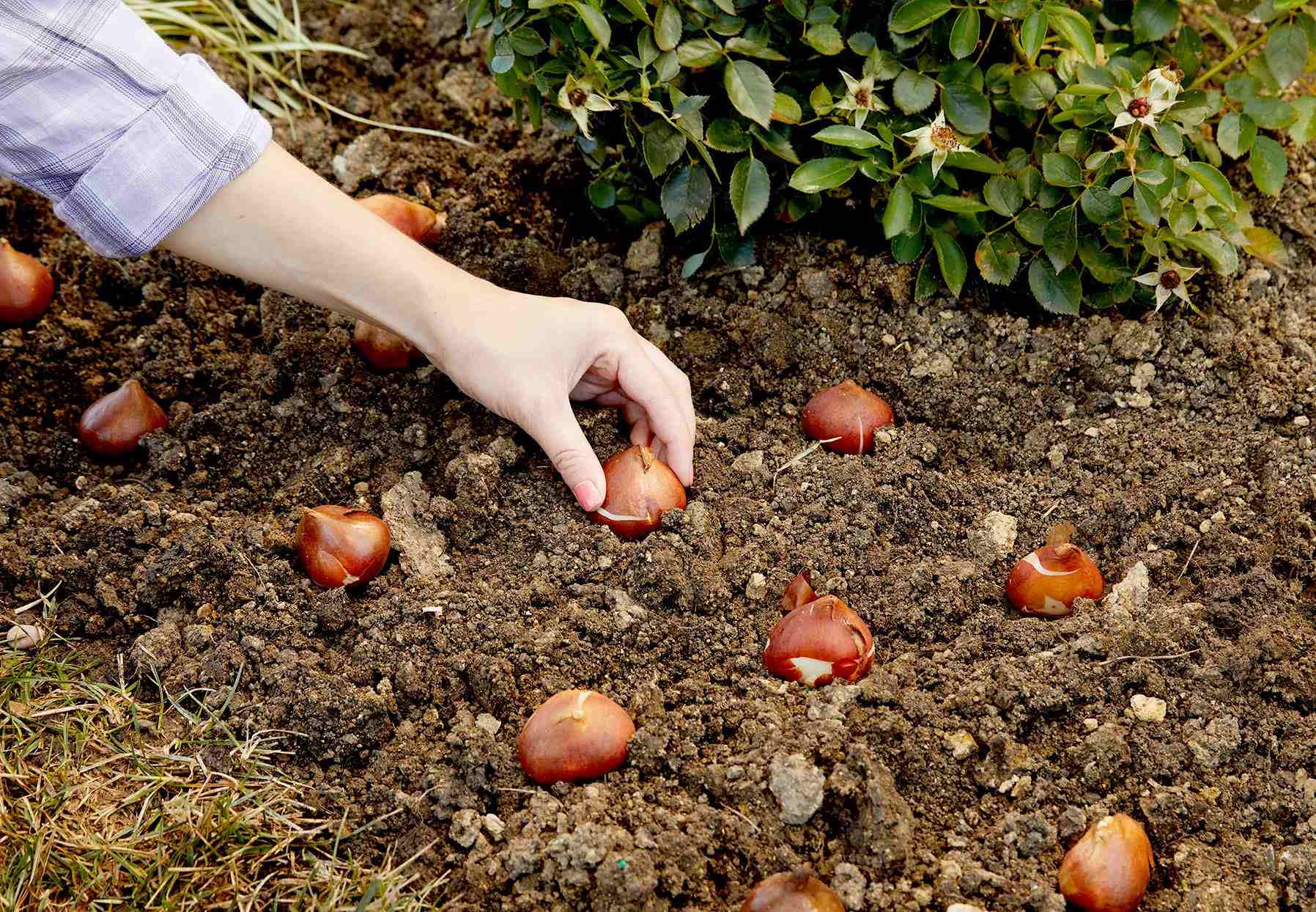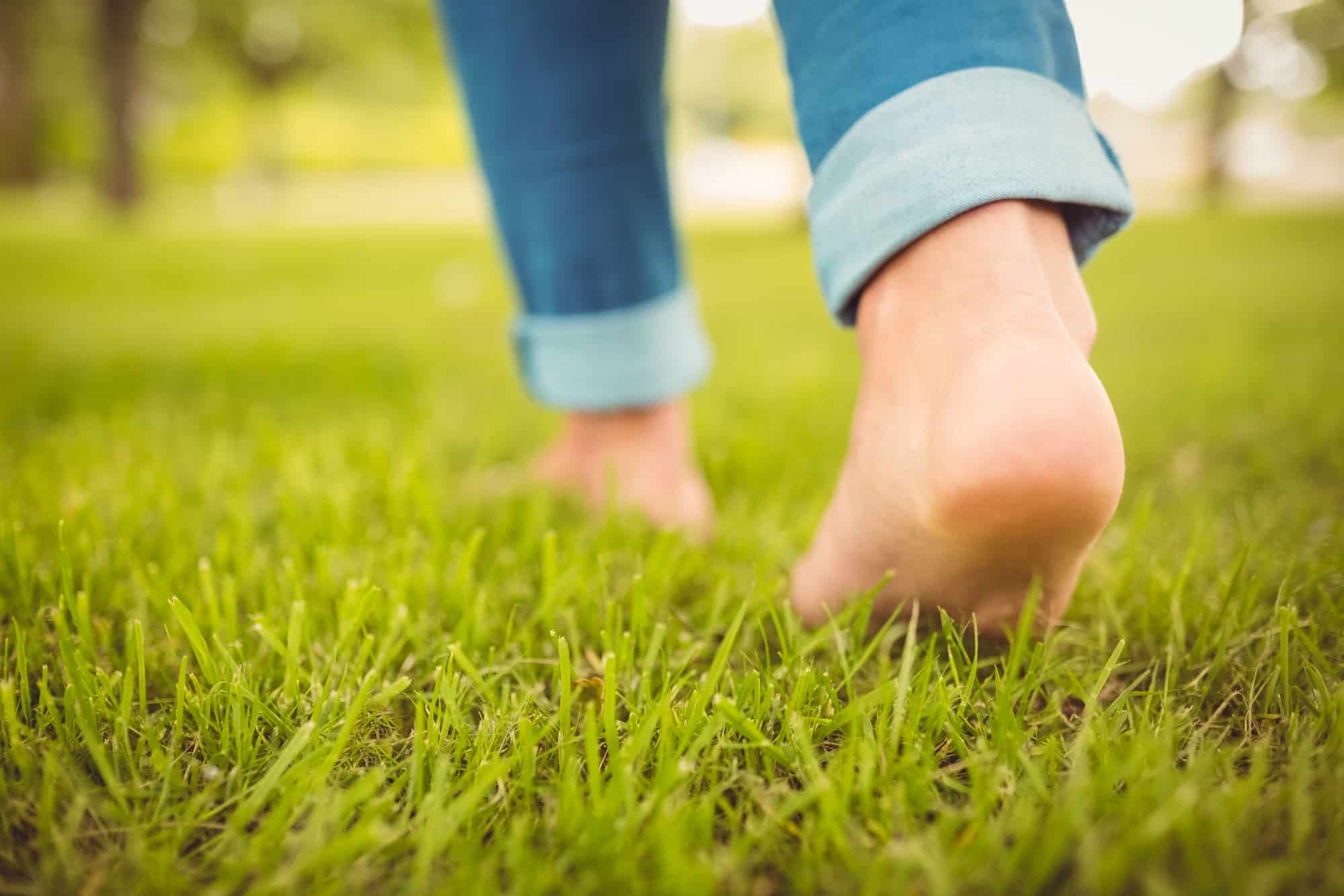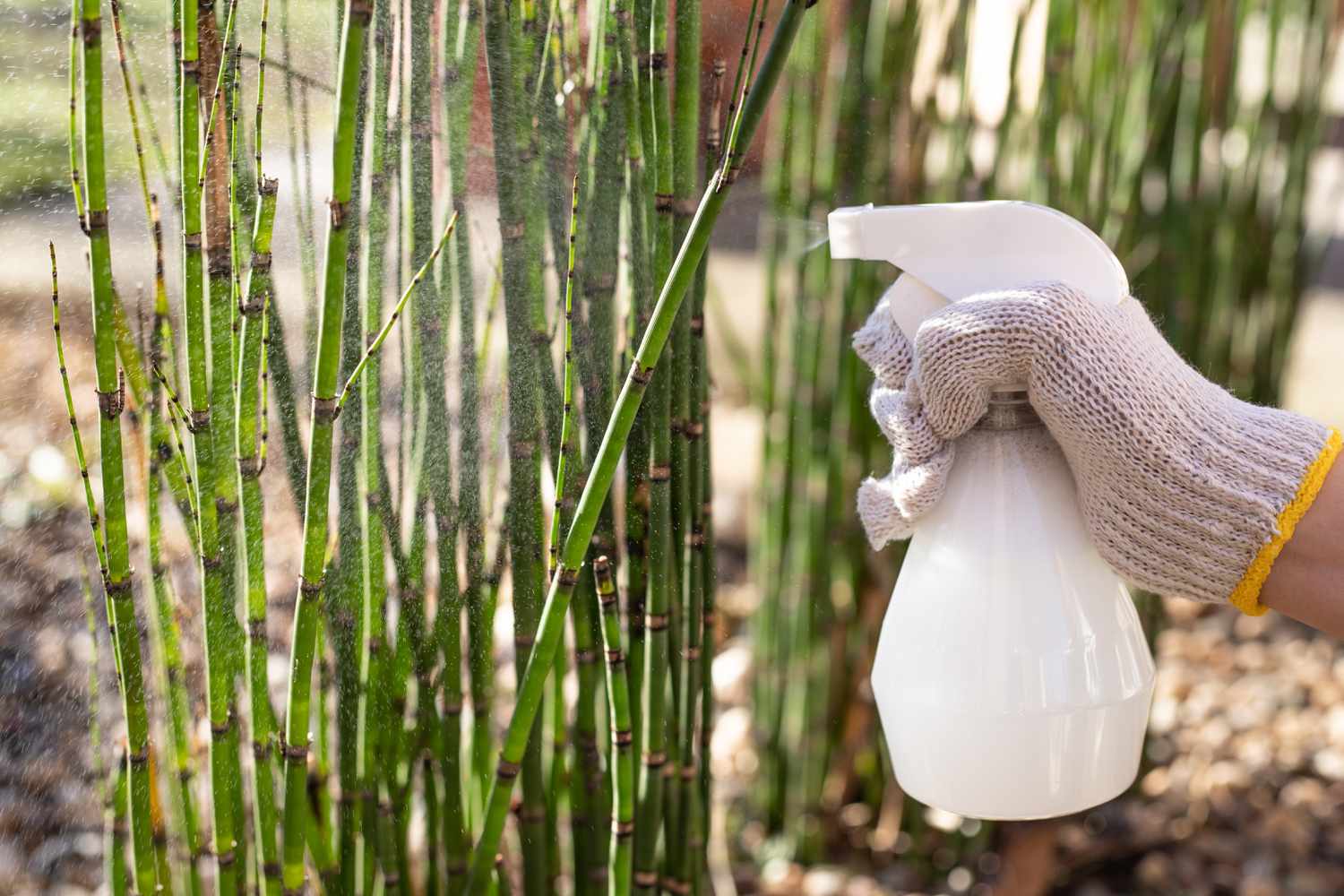Home>Gardening Basics>Getting Started>How Long After Spraying Weeds Can I Mow


Getting Started
How Long After Spraying Weeds Can I Mow
Modified: January 22, 2024
Find out the ideal waiting time after spraying weeds before mowing your lawn. Learn the best practices for getting started with weed control.
(Many of the links in this article redirect to a specific reviewed product. Your purchase of these products through affiliate links helps to generate commission for Chicagolandgardening.com, at no extra cost. Learn more)
Table of Contents
Introduction
Introduction
When it comes to maintaining a healthy and vibrant lawn, managing weed growth is a crucial aspect of lawn care. Weeds not only detract from the aesthetic appeal of the lawn but also compete with grass for essential nutrients, water, and sunlight. One common method of weed control is through the application of herbicides. However, many homeowners are often left wondering, “How long after spraying weeds can I mow?” This question is pivotal as it directly impacts the effectiveness of the herbicide treatment and the overall health of the lawn. In this comprehensive guide, we will delve into the various factors that influence the timing of mowing after weed spraying and provide valuable insights to help you achieve a lush and weed-free lawn.
Understanding the interplay between herbicide application and lawn maintenance is essential for achieving optimal results. By exploring the type of herbicide used, weather conditions, type of weeds present, and the waiting period after spraying, homeowners can make informed decisions regarding the timing of mowing after weed control treatments. Let’s embark on this journey to unravel the intricacies of post-spraying lawn care and discover the best practices for maintaining a healthy, weed-free lawn.
Factors to Consider
Before reaching for the lawnmower after spraying weeds, several crucial factors need to be taken into account to ensure the efficacy of the herbicide treatment and the health of the lawn. Understanding these factors is pivotal in making informed decisions regarding the timing of mowing after weed control treatments. Let’s explore the key considerations:
- Type of Herbicide Used: The type of herbicide applied plays a significant role in determining the waiting period before mowing. Different herbicides have varying formulations and modes of action, influencing the time it takes for the product to be absorbed by the weeds and translocated to the root system. It’s essential to consult the herbicide label or product instructions to ascertain the recommended waiting period before mowing.
- Weather Conditions: Weather can profoundly impact the effectiveness of herbicide applications and the subsequent mowing schedule. Factors such as temperature, humidity, and precipitation can influence the absorption and translocation of the herbicide within the weeds. Additionally, extreme weather conditions, such as high heat or heavy rain, may necessitate adjustments to the mowing timeline to optimize the herbicide’s performance.
- Type of Weeds: The species and growth stage of the weeds being targeted also influence the post-spraying mowing timeline. Some resilient or extensive root systems may require a longer waiting period to ensure the herbicide effectively reaches and eradicates the entire plant. Understanding the specific weeds present in the lawn can guide the decision-making process regarding mowing after herbicide application.
By carefully considering these factors, homeowners can make informed decisions regarding the optimal timing for mowing after spraying weeds, ultimately maximizing the effectiveness of the herbicide treatment and promoting a healthier, weed-free lawn.
Type of Herbicide Used
When determining the appropriate timing for mowing after spraying weeds, the type of herbicide employed is a pivotal consideration. Herbicides can be broadly categorized as selective or non-selective, each with unique properties that influence the post-application mowing schedule.
Selective Herbicides: These herbicides are formulated to target specific types of weeds while minimizing harm to desirable turf grasses. Selective herbicides are commonly used in lawns to control broadleaf weeds, grassy weeds, or sedges. Due to their targeted action, selective herbicides typically have a shorter waiting period before mowing. However, it is crucial to consult the product label or instructions to ascertain the specific waiting period recommended by the manufacturer.
Non-Selective Herbicides: In contrast, non-selective herbicides are designed to control or eradicate a broad spectrum of plant species, including both weeds and desirable vegetation. These herbicides are often used in areas where complete vegetation control is desired, such as along walkways, driveways, or in preparation for reseeding or re-sodding. Non-selective herbicides may require a longer waiting period before mowing to allow for thorough absorption and translocation within the targeted weeds.
Additionally, herbicides can be further classified based on their mode of action, such as systemic or contact herbicides. Systemic herbicides are absorbed by the plant and translocated throughout its system, making them effective at targeting the roots and preventing regrowth. Contact herbicides, on the other hand, primarily affect the parts of the plant they directly contact and may require thorough coverage for optimal efficacy.
Understanding the specific characteristics of the herbicide used, including its selectivity, mode of action, and recommended waiting period, is essential for determining the ideal timing for mowing after weed spraying. By adhering to the manufacturer’s guidelines and considering the properties of the herbicide, homeowners can maximize the effectiveness of the treatment while promoting a healthy and weed-free lawn.
Weather Conditions
Weather exerts a profound influence on the efficacy of herbicide applications and the subsequent mowing schedule. Various weather factors can impact the absorption, translocation, and overall performance of herbicides, necessitating careful consideration when determining the optimal timing for mowing after spraying weeds.
Temperature: The ambient temperature can significantly affect the activity of herbicides. In general, warmer temperatures enhance the absorption and translocation of herbicides within the target weeds. However, extreme heat can also stress both the weeds and the turf grass, potentially necessitating adjustments to the mowing schedule. It is advisable to avoid mowing during periods of excessive heat to prevent additional stress on the lawn.
Humidity: Adequate humidity levels are essential for optimizing herbicide performance. Dry, arid conditions may impede the absorption of certain herbicides, potentially prolonging the waiting period before mowing. Conversely, excessively high humidity can lead to prolonged herbicide retention on the foliage, necessitating cautious timing for mowing to avoid disrupting the treatment’s efficacy.
Precipitation: Rainfall can have varying effects on herbicide applications. While light precipitation can aid in the activation and absorption of certain herbicides, heavy or prolonged rainfall shortly after application may necessitate an extended waiting period before mowing. Additionally, mowing immediately after heavy rain can diminish the effectiveness of the herbicide treatment by removing the product from the foliage.
By closely monitoring weather conditions and their potential impact on herbicide performance, homeowners can make informed decisions regarding the optimal timing for mowing after weed spraying. Adjusting the mowing schedule in response to prevailing weather conditions can help maximize the effectiveness of the herbicide treatment and promote a healthy, weed-free lawn.
Type of Weeds
Understanding the specific types of weeds present in the lawn is instrumental in determining the appropriate timing for mowing after herbicide application. Different weeds exhibit varying growth habits, root systems, and susceptibility to herbicides, all of which influence the post-spraying mowing schedule.
Broadleaf Weeds: This category encompasses a wide range of weeds with broad, flat leaves. Examples include dandelions, clover, and chickweed. Broadleaf weeds are often effectively controlled by selective herbicides designed to target these specific plant types. Depending on the selectivity and mode of action of the herbicide used, the waiting period before mowing after treating broadleaf weeds may vary.
Grassy Weeds: Grass-like weeds, such as crabgrass and goosegrass, present unique challenges in weed control. Selective herbicides targeting grassy weeds may require a specific waiting period to ensure optimal absorption and translocation within the plants. Moreover, the growth habit and extensive root systems of grassy weeds may necessitate a longer waiting period before mowing to achieve effective control.
Perennial Weeds: Perennial weeds, including species such as bindweed and nutsedge, possess persistent root systems that enable them to regrow even after mowing or herbicide application. Consequently, herbicide treatments targeting perennial weeds may require a longer waiting period before mowing to ensure thorough absorption and translocation throughout the extensive root system, ultimately preventing regrowth.
By identifying the specific types of weeds infesting the lawn and understanding their growth habits and susceptibility to herbicides, homeowners can make informed decisions regarding the optimal timing for mowing after weed spraying. Tailoring the mowing schedule to accommodate the unique characteristics of the targeted weeds can enhance the effectiveness of the herbicide treatment and contribute to the long-term health of the lawn.
Waiting Period After Spraying
Following the application of herbicides to control weeds, a crucial consideration is the waiting period before mowing the treated area. This waiting period is determined by various factors, including the type of herbicide used, weather conditions, and the specific weeds targeted. Understanding the waiting period after spraying is essential for maximizing the effectiveness of the herbicide treatment and promoting a healthy lawn.
Type of Herbicide: Different herbicides have varying recommended waiting periods before mowing. Selective herbicides targeting specific weed types may have a shorter waiting period, while non-selective herbicides or those targeting resilient weeds may necessitate a longer interval before mowing. It is imperative to consult the herbicide label or product instructions to determine the manufacturer’s recommended waiting period.
Weather Conditions: Weather factors, such as temperature, humidity, and precipitation, can influence the waiting period after herbicide application. Warm, dry conditions may expedite the absorption and translocation of herbicides, potentially shortening the waiting period. Conversely, cool or humid conditions may prolong the waiting period, requiring patience before mowing the treated area.
Type of Weeds: The specific weeds being targeted also impact the waiting period after spraying. Resilient or deep-rooted weeds may require a longer waiting period to ensure the herbicide effectively reaches and eradicates the entire plant, preventing regrowth. Understanding the growth habits and susceptibility of the targeted weeds is pivotal in determining the optimal waiting period before mowing.
By considering these factors and adhering to the manufacturer’s guidelines, homeowners can determine the appropriate waiting period after spraying weeds before mowing the lawn. Patience during this waiting period is essential to allow the herbicide to exert its full effect on the targeted weeds, ultimately contributing to a healthier and more vibrant lawn.
Mowing After Application
After the prescribed waiting period following herbicide application, the timing of mowing becomes a critical consideration to ensure the effectiveness of the treatment and promote the overall health of the lawn. Several key factors should be taken into account when determining the optimal timing for mowing after weed spraying.
Post-Waiting Period Assessment: Before proceeding with mowing, it is essential to assess the condition of the treated weeds. Signs of herbicide uptake, such as wilting, browning, or other visible indications of distress, can serve as indicators that the herbicide has begun to take effect. Additionally, ensuring that the weeds have had adequate time to absorb the herbicide is crucial for maximizing the treatment’s efficacy.
Adjusting Mowing Height: When mowing after herbicide application, adjusting the mowing height can help minimize stress on the treated vegetation and promote the recovery of the surrounding turf grass. Raising the mowing height slightly can reduce the impact on the treated weeds while allowing the grass to thrive. This adjustment can aid in maintaining a healthy and uniform lawn appearance while the herbicide treatment takes full effect.
Proper Equipment Maintenance: Prior to mowing the treated area, ensuring that the lawnmower blades are sharp and well-maintained is essential. Dull blades can cause undue stress on the grass and treated weeds, potentially impeding their recovery. Additionally, cleaning the mower deck to remove any herbicide residue can prevent unintentional herbicide spread to untreated areas.
Observing Caution: It is advisable to approach mowing with caution after herbicide application, particularly if non-selective herbicides were used. Care should be taken to avoid dispersing herbicide-treated plant material to untreated areas, as this can inadvertently damage desirable vegetation. Furthermore, minimizing foot traffic on the treated area immediately after mowing can help prevent herbicide transfer and promote the recovery of the lawn.
By carefully considering these factors and taking a cautious approach to mowing after herbicide application, homeowners can contribute to the success of the weed control treatment and the overall health and aesthetics of their lawn. Adhering to best practices for post-application mowing can help maximize the effectiveness of the herbicide treatment and foster a lush, weed-free lawn.
Conclusion
Managing weed growth and maintaining a healthy lawn requires a thoughtful approach to herbicide application and post-spraying lawn care. By considering the type of herbicide used, weather conditions, type of weeds present, the waiting period after spraying, and the timing of mowing after application, homeowners can optimize the effectiveness of weed control treatments and promote the long-term health of their lawns.
Understanding the characteristics of the herbicide employed, including its selectivity and mode of action, is pivotal in determining the waiting period before mowing. Additionally, monitoring weather conditions and their impact on herbicide performance can guide the decision-making process regarding the optimal timing for mowing after weed spraying.
Identifying the specific types of weeds infesting the lawn and understanding their growth habits and susceptibility to herbicides allows for tailored post-spraying mowing schedules that maximize the treatment’s effectiveness. Patience during the waiting period after spraying is essential to allow the herbicide to exert its full effect on the targeted weeds, ultimately contributing to a healthier and more vibrant lawn.
When approaching mowing after herbicide application, careful assessment of the treated weeds, adjustment of mowing height, and proper equipment maintenance are vital for minimizing stress on the treated vegetation and promoting the recovery of the lawn. Caution should be exercised to avoid unintentional herbicide spread and to protect the overall health of the lawn.
By integrating these considerations into their lawn care practices, homeowners can achieve effective weed control, cultivate a lush and vibrant lawn, and enhance the overall beauty of their outdoor spaces. Through informed decision-making and attentive post-spraying care, the battle against weeds can be won, leading to a thriving and resilient lawn for years to come.




